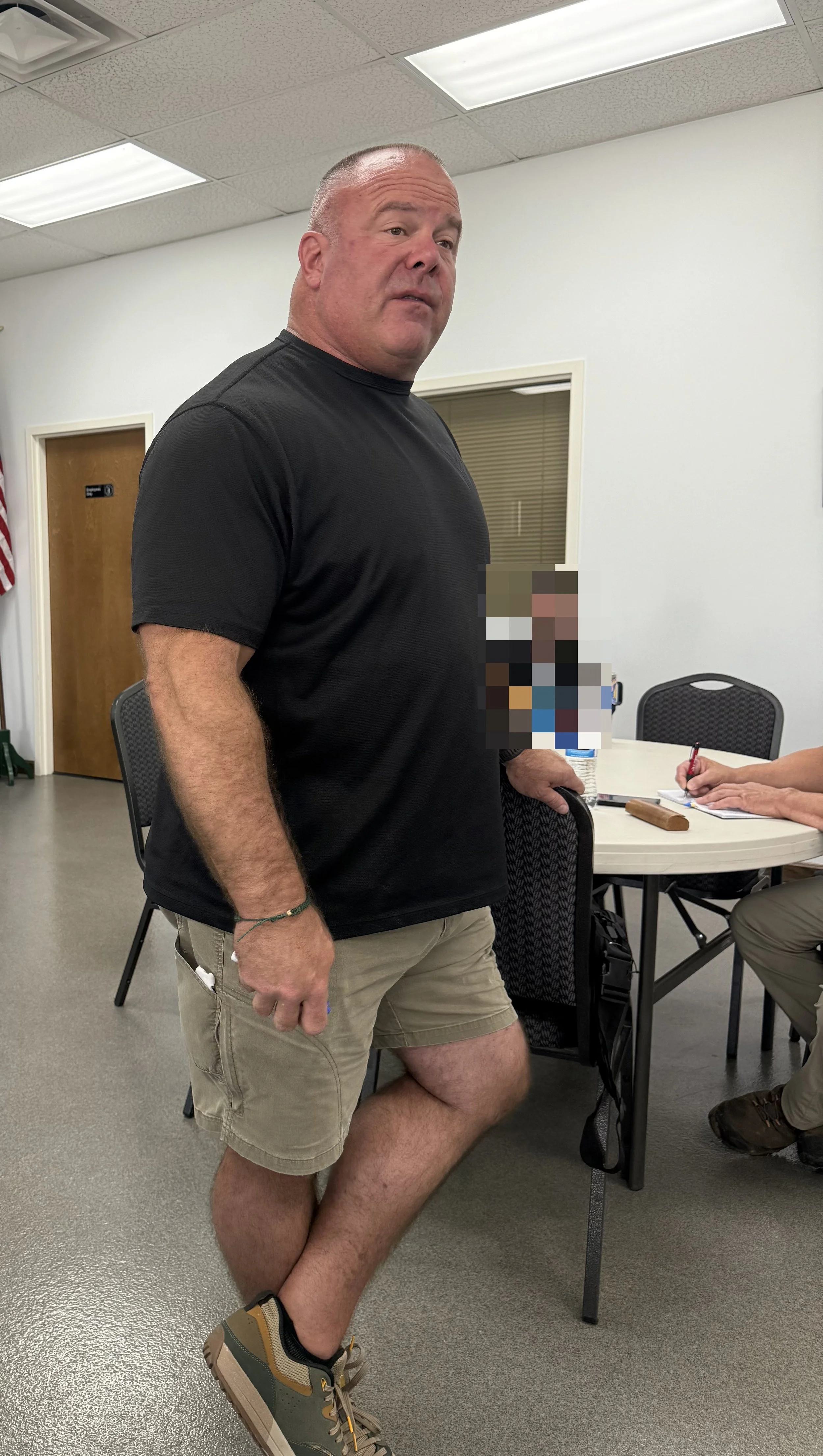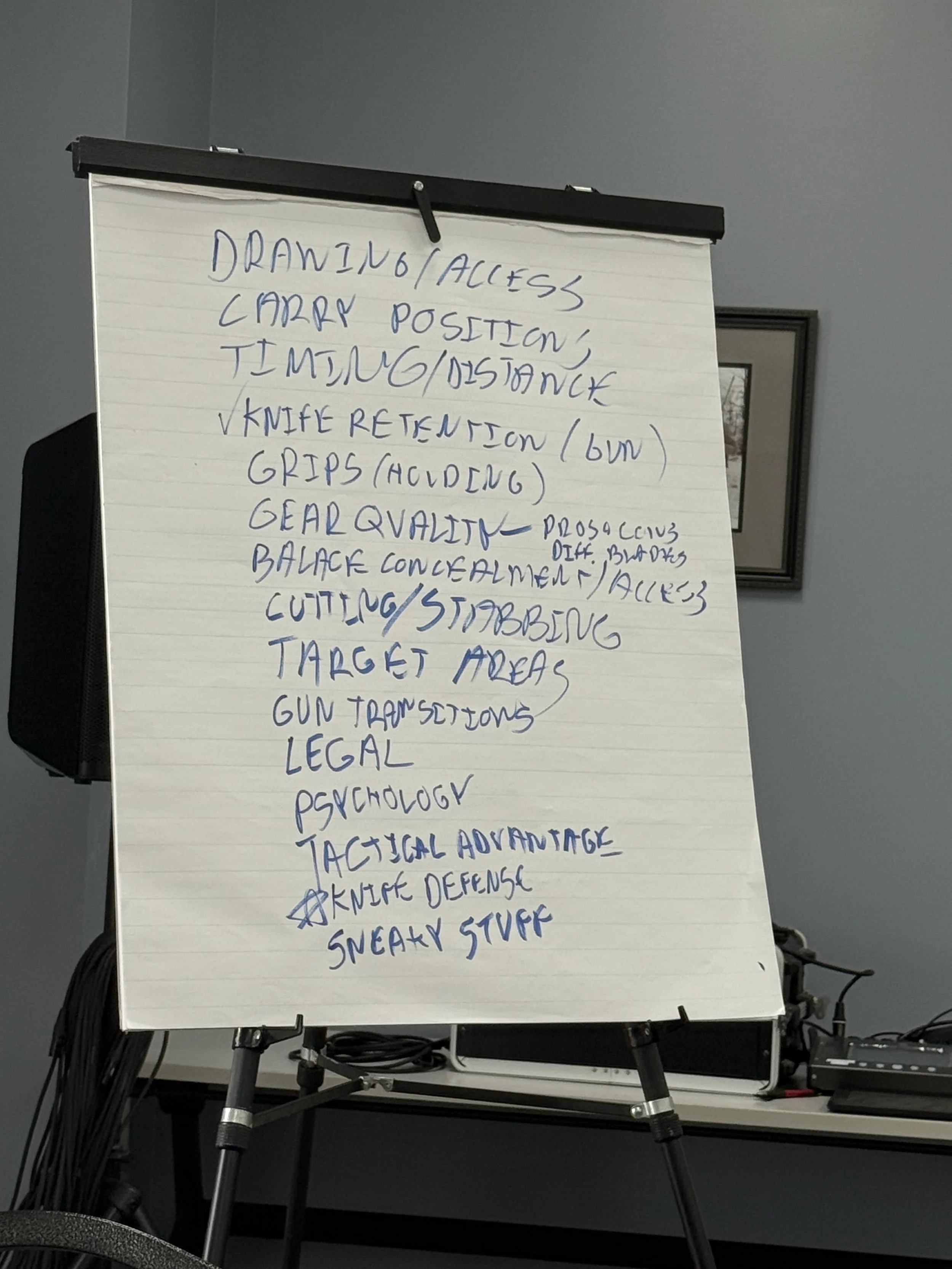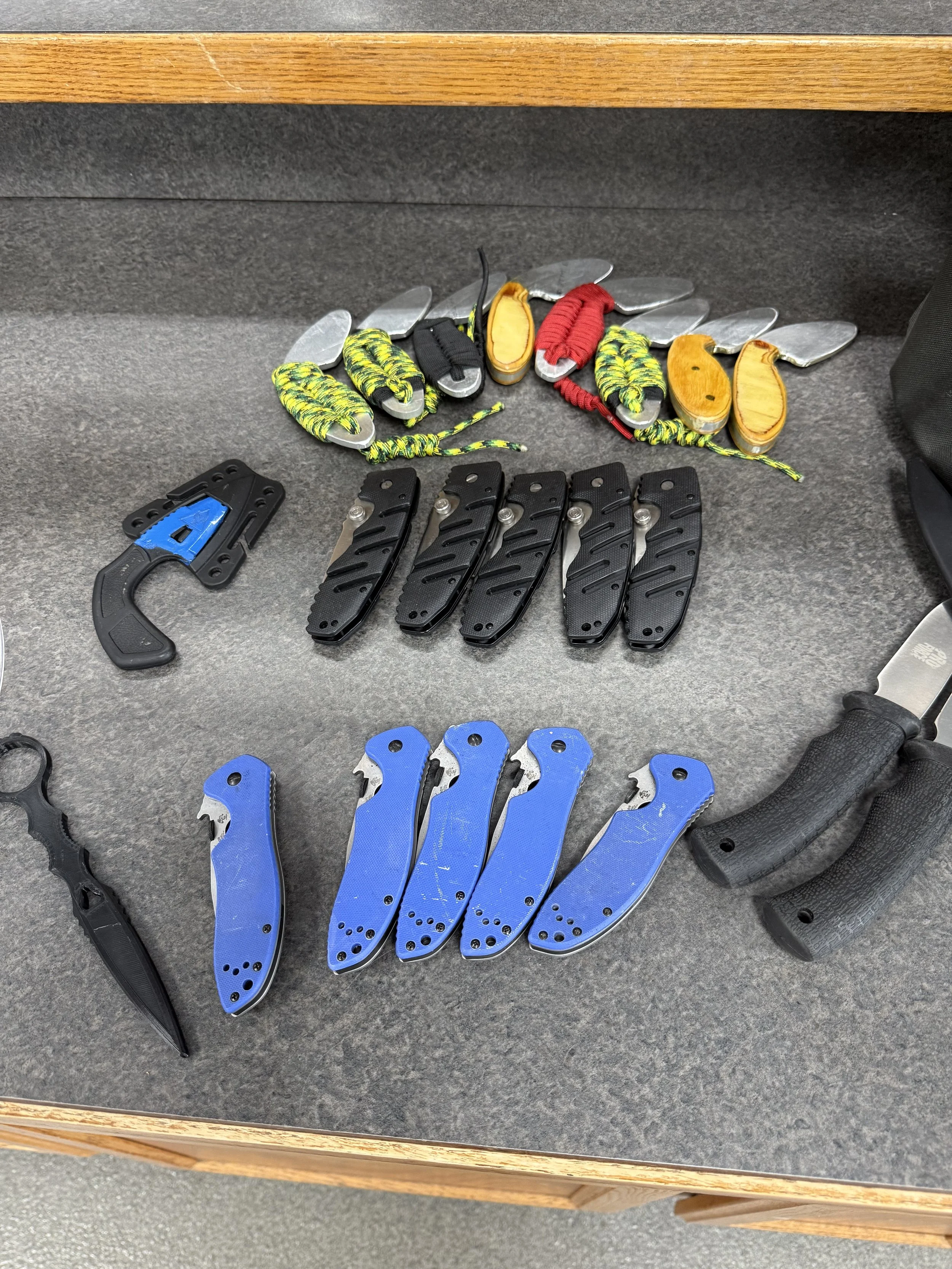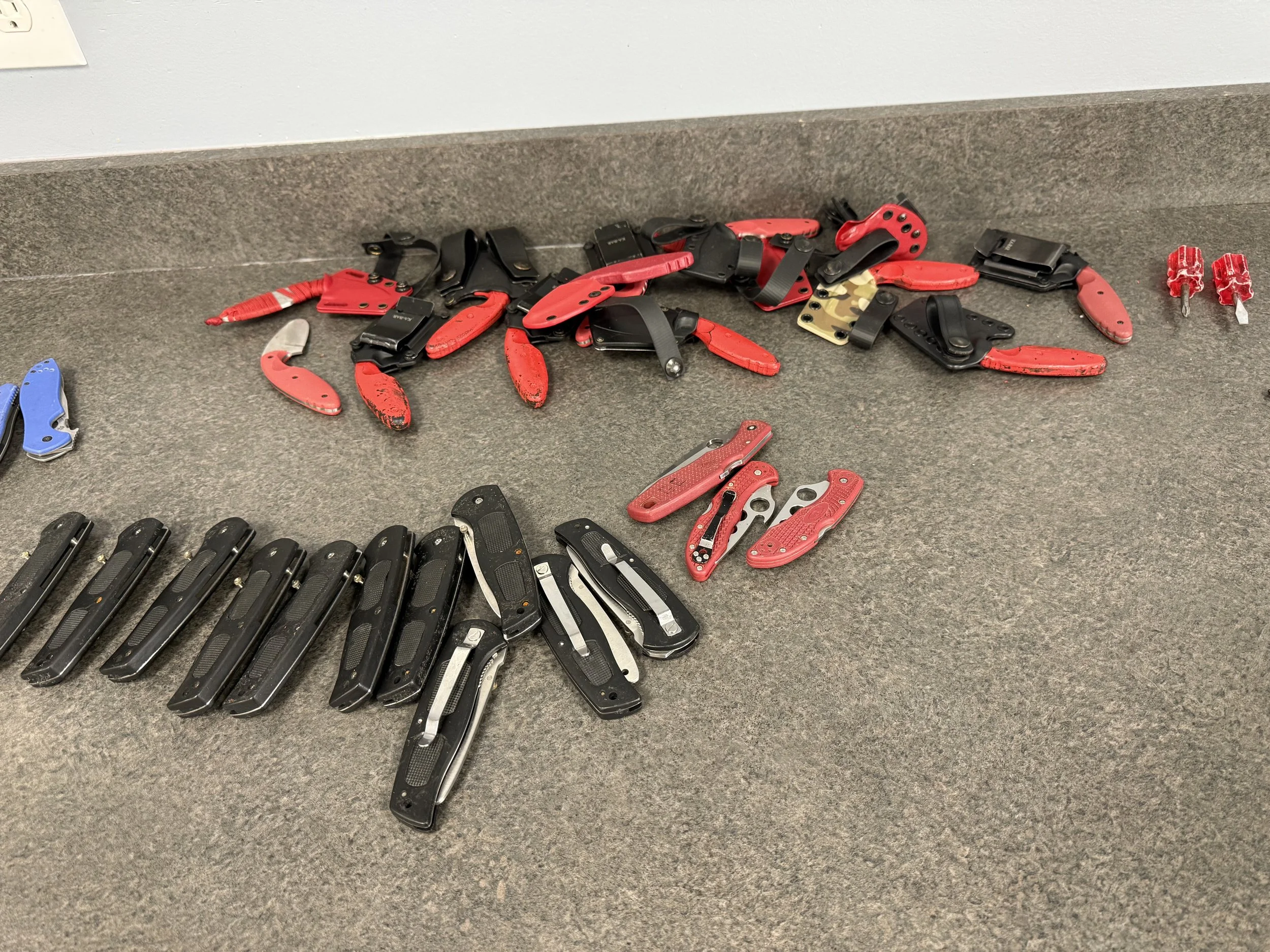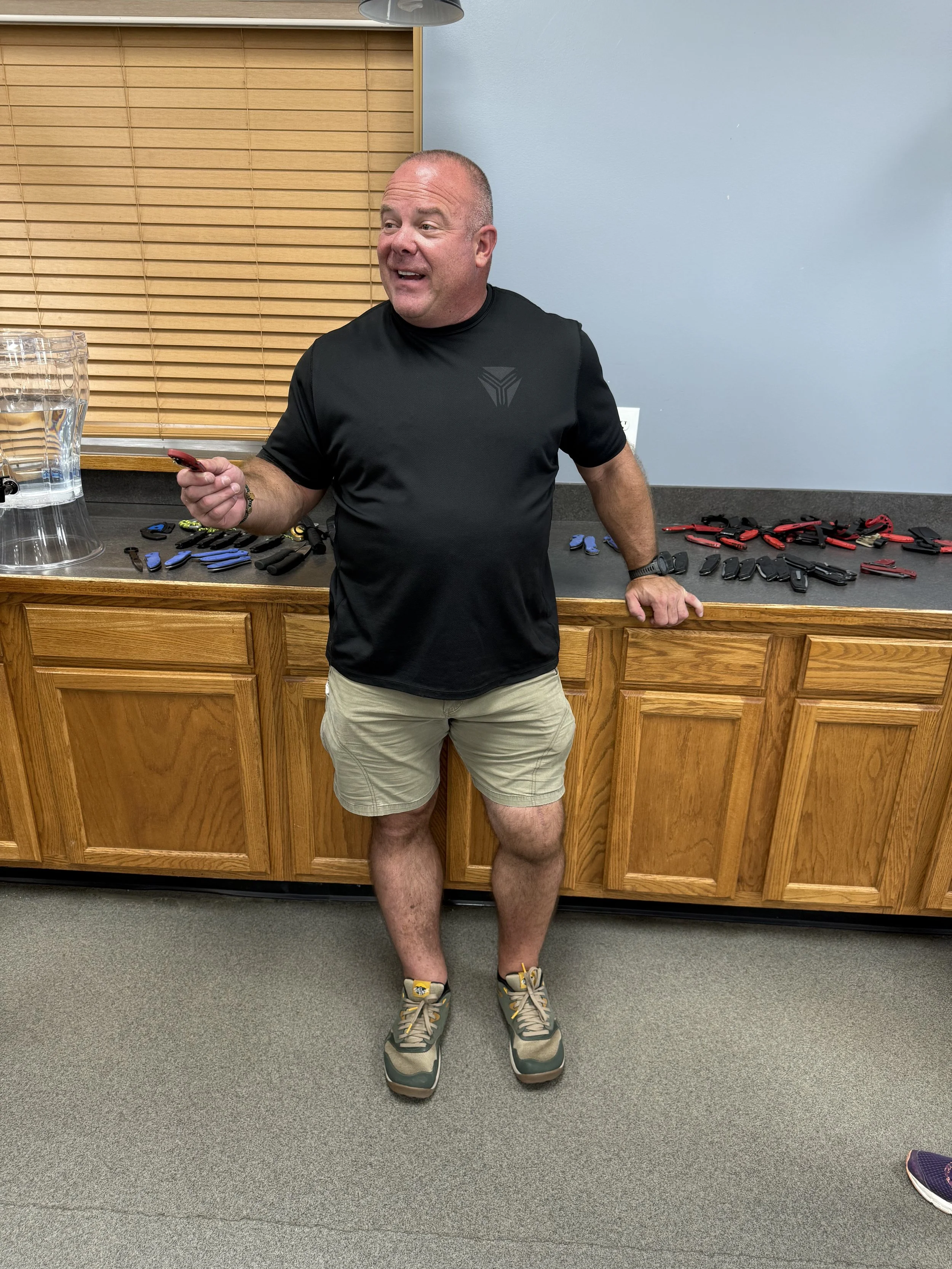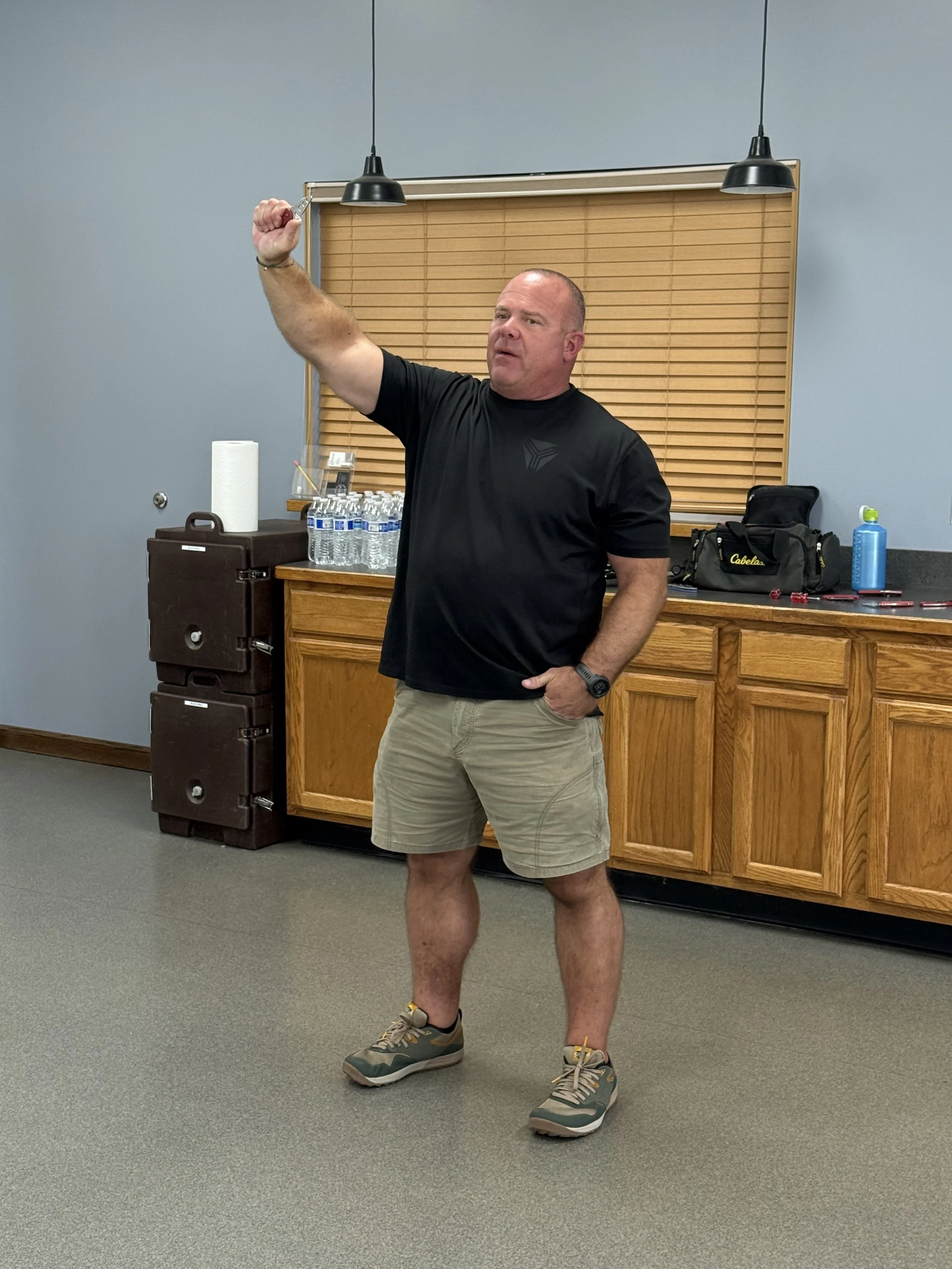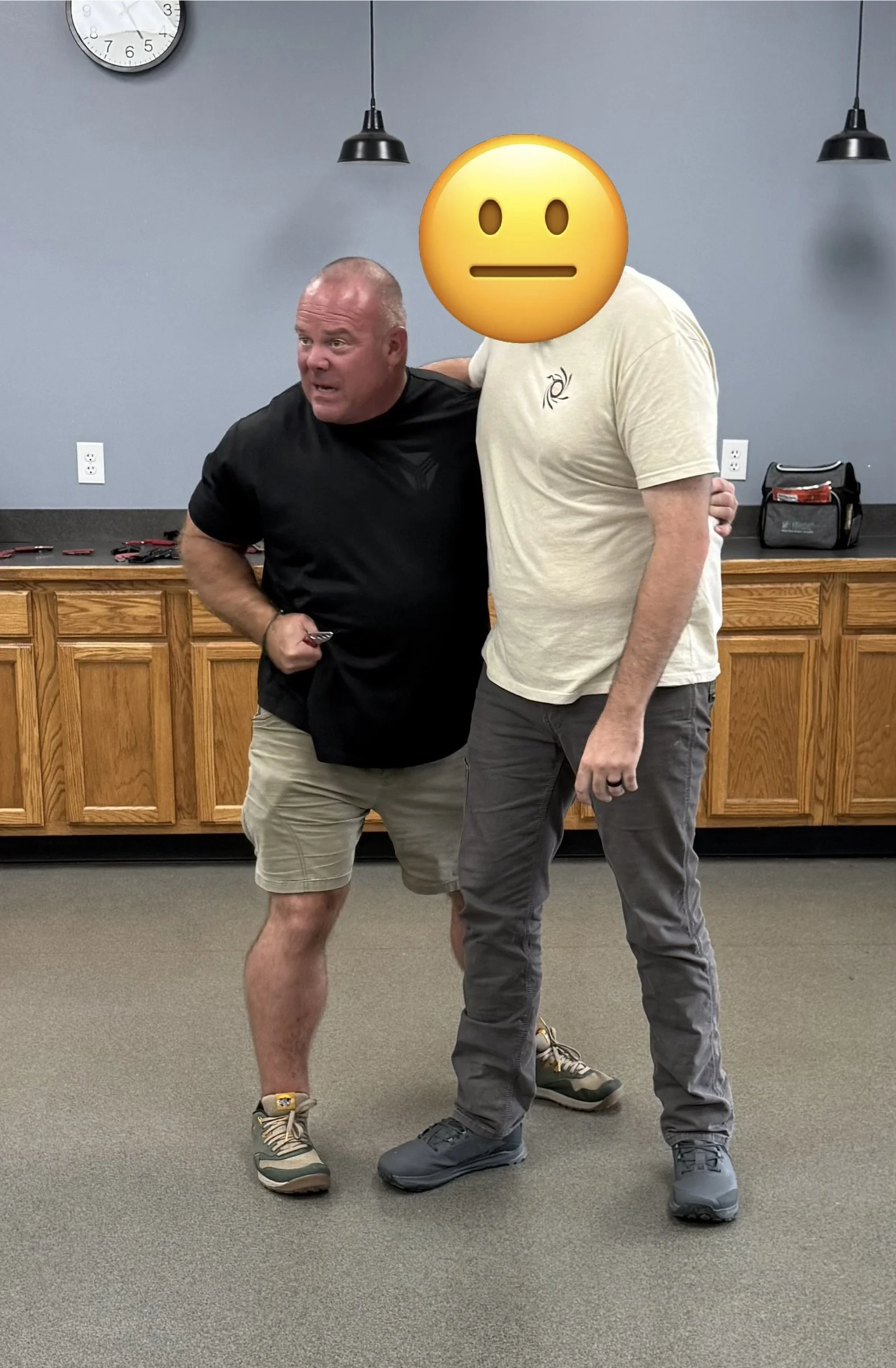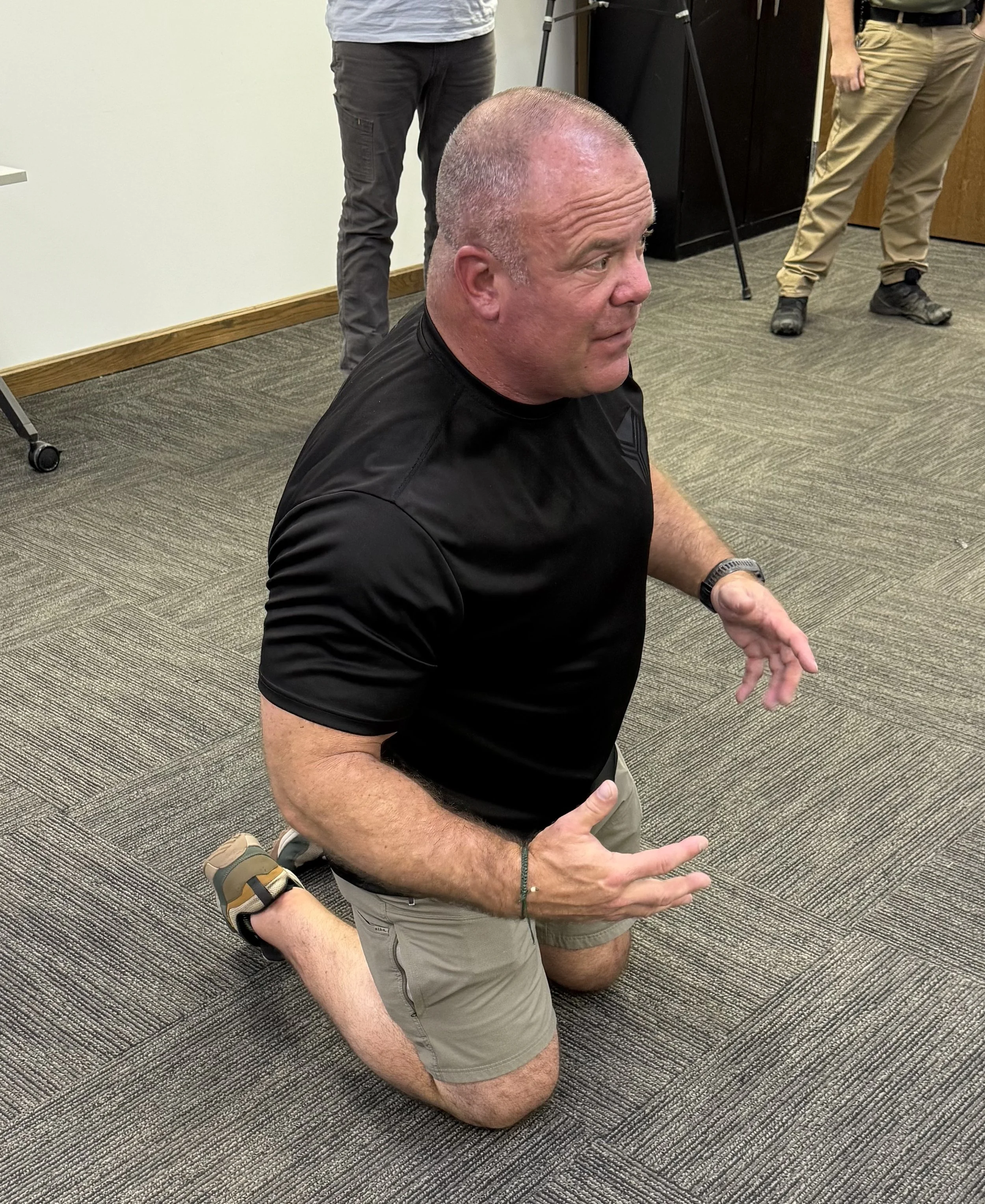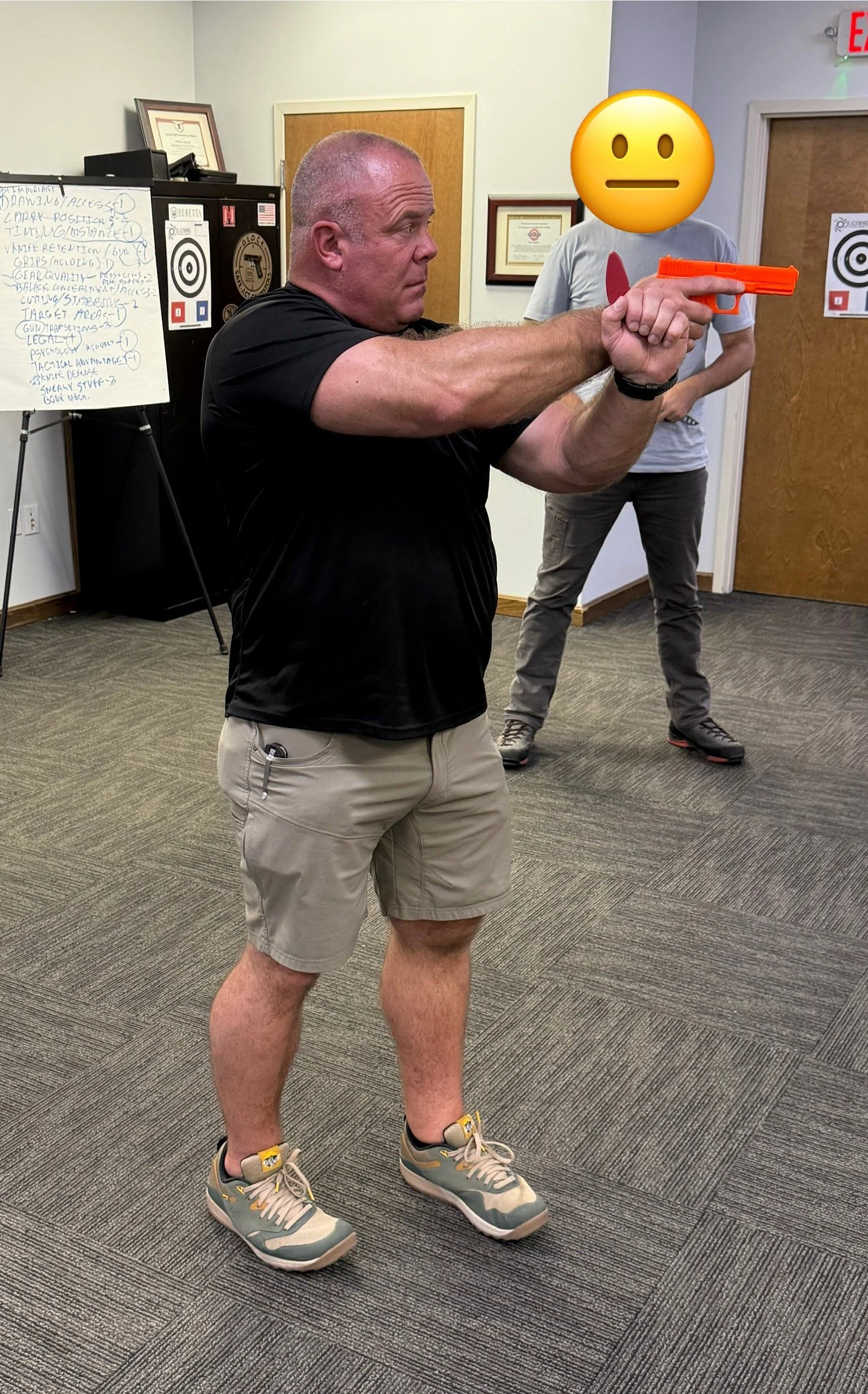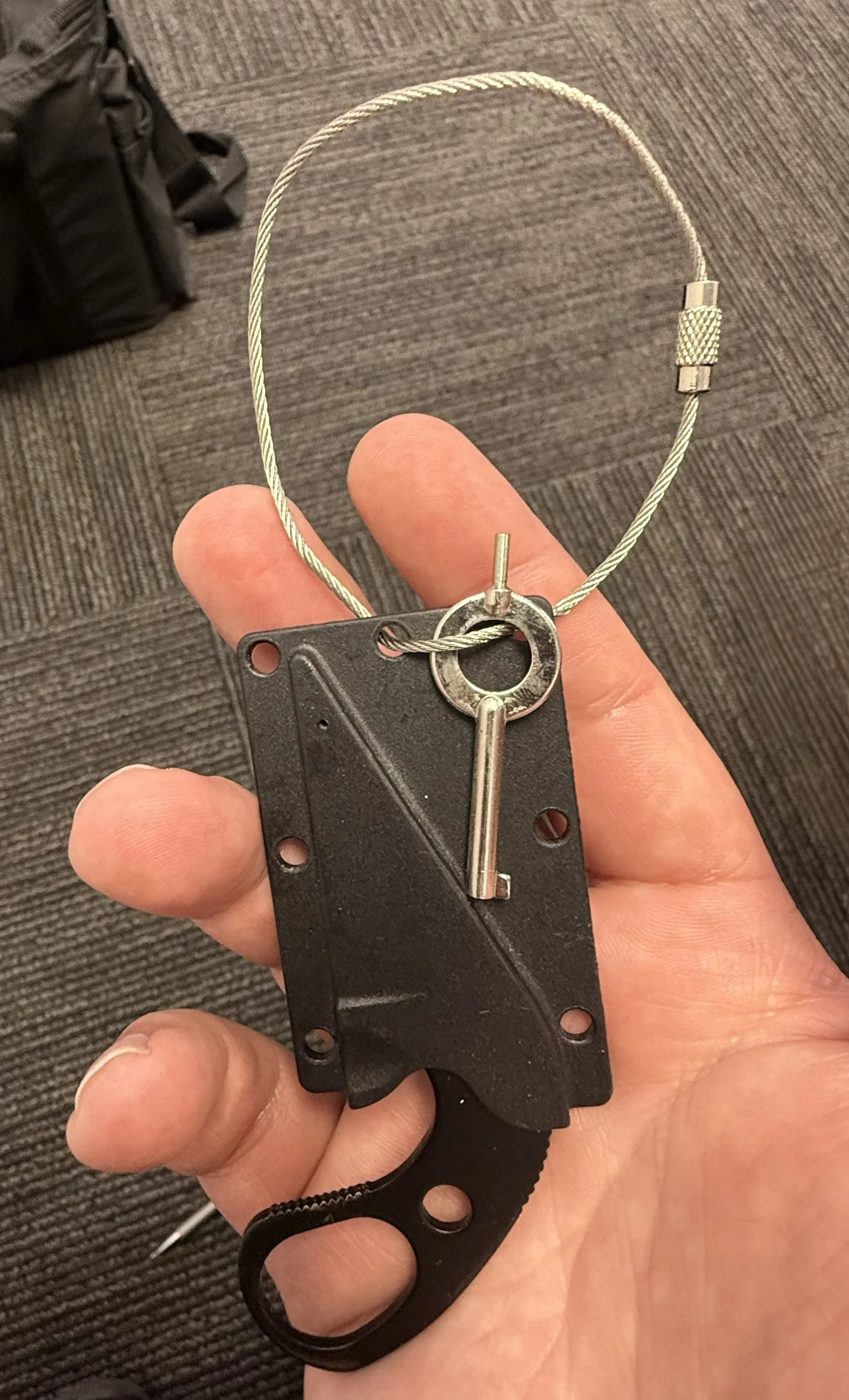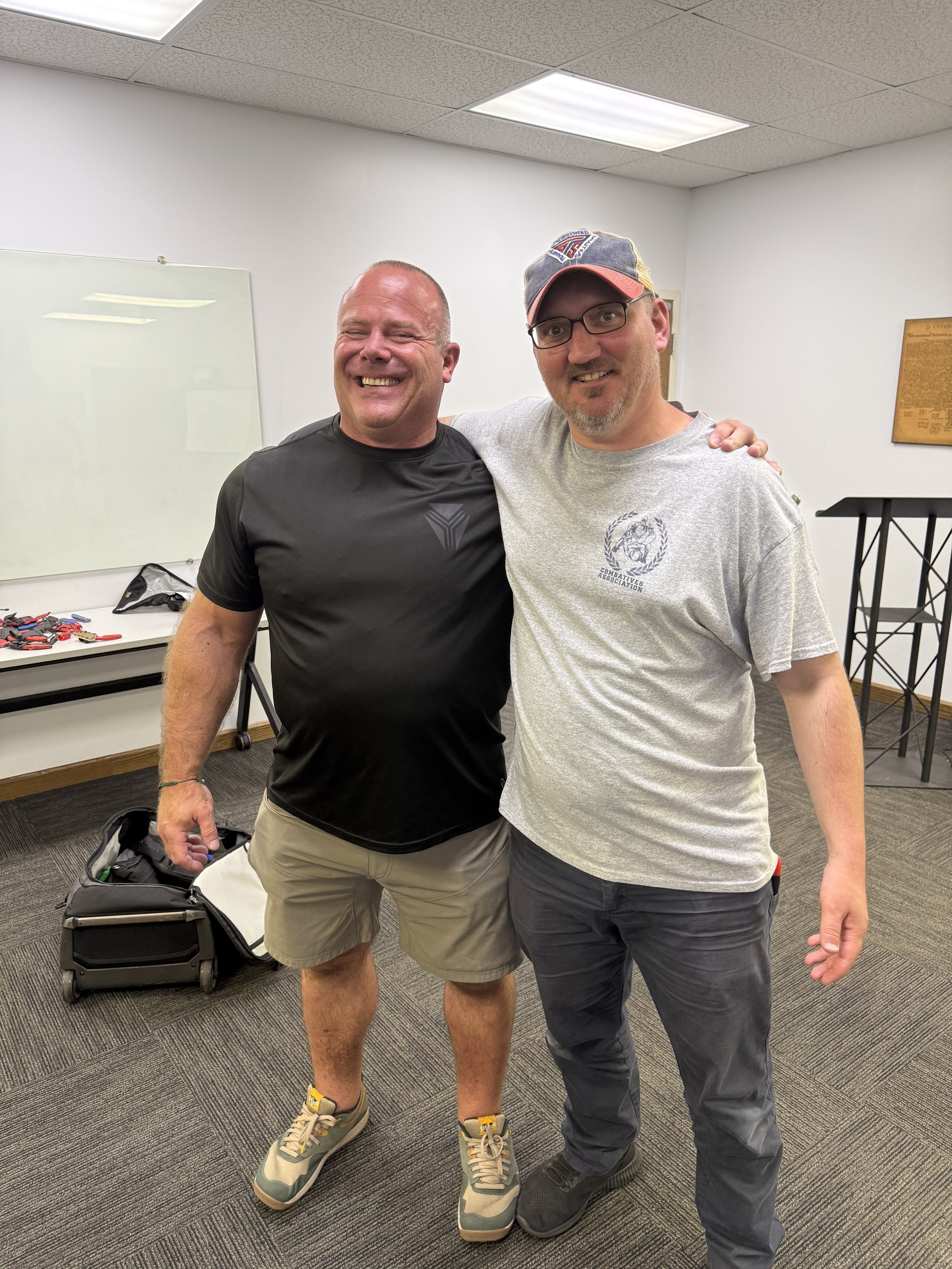After Action Report: Knife Defense for Instructors with Greg Ellifritz
I’ve attended many, many classes; but, this is the first after action report I have written. So bear with me.
Greg Ellifritz shouldn’t need an introduction, but I’ll do one anyway. He’s a retired police officer with over 20 years of service. He’s also taken more training classes and holds more instructor certifications than just about anyone I know of. He is gracious enough to share that knowledge and experience with the world through his blog (mandatory reading, if you’re not already), his Weekend Knowledge Dump (also mandatory reading), and classes he teaches. Lastly, he’s just an all-around interesting person and fun to hang out with. You can read more about him here.
Greg at the front of the classroom doing introductions
I have had the pleasure of taking several classes with Greg in the past, so I knew I was in for a good experience. But this one was unique, as it wasn’t a gun class and it was his first time teaching his new knife defense instructor-level class. And what a unique experience it was!
For starters, after we went around the room introducing ourselves, Greg had us write down three things we would expect to learn about in a knife defense class. After a few minutes, he then had us shout out the things we wrote down, and he wrote each one on a large sheet of paper for everyone to see. What we didn’t know, and he later told us, is that we were creating the curriculum for the class.
This was one of the most unique and ingenious things I have ever seen from any instructor. Curriculum development is an important, and often overlooked aspect, of teaching.
The “curriculum” we came up with
Next, Greg took it a step further and had us rate each item for level of importance on a scale of one to three, with one being most important and three being kind of important. As he went down the list, we as a class came to a consensus on how each item should be rated. This would lead us to another one of Greg’s brilliant revelations: how much time to spend on each topic. As it turned out, everything we rated as a one was something we, as instructors, felt was important. Everything we rated as a three was something our students would want to know or ask about. But, most of the time would be spent in the realm of the twos.
With the curriculum established, we moved on to some hands-on stuff. Greg brought lots of training knives with him, as well as some training pistols. He took the time to talk about each of them, the pros and cons, how much they cost, and where to get them.
Sadly, the KaBar TDI training knife is no longer made. But here are some links to the knives we used:
ProForce Folding Lock Blade Sport Trainer Knife
Over the course of the weekend, we trained with both fixed blades and folding knives. Two fixed blades were the most prevalent: The KaBar TDI LE knife and the ShivWorks El Nino push dagger. While you can easily purchase a trainer version of the El Nino, unfortunately the TDI LE trainer is no longer in production. But, Greg had a solution for that: purchase the TDI LE knife, use a bench grinder to dull the edge, and then paint it red to indicate it is a training knife.
Training guns. Instructors should probably have at least a few of these
More training knives
Greg talking about some of the training knives we would be using over the course of the weekend
Before we proceeded with the hands-on portion, Greg not only gave us a safety brief, but taught us how to ensure the safety of our students. This is a very important aspect to consider when pokey-stabby things are in play. He talked about three things, specifically: self-check, buddy-check, and instructor-check. That’s three layers of safety. He also pointed out two things which might get overlooked in a class like this. The first is making sure to do the safety checks again after a break. If students have had a chance to leave the room, go to their vehicles, etc., who knows what they brought back in with them? You absolutely MUST do the safety checks again after a break. The second thing that might get overlooked is the instructor. Who is checking him/her? And how do you show the students that you, too, are being safe? Both of these issues were addressed in class.
After discussing safety, it was on to some of the fun stuff. Greg talked about various types of knives, who designed them, and their use case. He also talked about carry locations, covering everything from in-the-pocket to neck knives and everything in-between. Greg advocated carrying forward of the hips for ease of access with either hand.
We spent a good bit of time working on gripping the knife and accessing the knife. Throughout the class, Greg advised the use of plain language when explaining things to students. For example, he used the terms “forward grip” and “reverse grip” rather than some fancy knife-specific terminology. He went on to show us multiple other ways to grip the knife and the pros and cons of each.
Greg demonstrates a thumb on spine forward grip
Another unique aspect of this class was that Greg didn’t teach specific striking methods. Instead, he opted to teach targeting areas. Since I recently attended the Tactical Anatomy Summit and the Shooting With X-Ray Vision Instructor classes, I really appreciated this approach. After discussing what areas of the body to target, Greg then had us pair up and use the training knives working with our partner at a nice easy pace. So, instead of doing knife kata striking technique 1, then technique 2, etc., we were encouraged to come up with our own creative ways to use the knife based on feedback from our training partner.
Greg demonstrating a technique with one of the students in class
Along the way, Greg interjected various teaching insights that I had never seen an instructor do before. At one point, we were all standing in a circle with Greg in the middle. As he began teaching, he walked backwards and inserted himself into the circle. He then paused, walked back to the middle of the circle and said something along the lines of, “Let me explain what I just did.” In this case, he wanted to make sure everyone could see what he was teaching. There were several other instances of him doing this throughout the two days. It was interesting to see not only the what and the why, but how.
Day two started with a presentation on legal problems with knives. Not only do we have to consider whether the knife is legal to carry (knife laws vary from state to sate), we also have to consider legal justification of our actions. And then we still may not win. Greg illustrated this through two court cases that showed us we can do everything “right” and still lose. How do you justify the knife you carry? What will the jury think if you use your knife and it goes to trial? These are questions a lot of people probably haven’t thought of before.
After a Q&A session, we moved on to opening methods for folding knives. Greg talked about and demonstrated one- and two-handed opening methods, as well as inertia opening, and discussed the pros and cons of each method. He then had us do a series of drills where we practiced accessing and opening the knife from various positions and with each hand. We went through standing, kneeling, and seated, and then talked about other possible positions we might find ourselves in such as lying on our backs, stomachs, and with an opponent on top of us.
Greg doing a demonstration from a kneeling position
Next, we paired up in two lines. One line of students played the attackers, the other were the defenders. On the start signal, the attackers would walk toward the defenders and the defenders were instructed to draw the knife and use it to defend themselves. We did this at various speeds and distances and used both folding and fixed blade training knives. It was a very useful drill to illustrate the amount of time needed to deploy a knife for self defense.
After another Q&A session, Greg moved on to teaching some discreet methods of deploying the knife. He covered the “bag trick” which he has written about here, as well as a number of other various methods for having the knife out, ready to go, without anyone knowing.
In the next section, Greg covered some more gory stuff which I won’t talk about here. You should go learn it directly from him. And that’s all I’ll say about that.
We then moved on to using the knife to defend against grabs, holds, and chokes. With our partners, we worked through wrist grabs, throat grabs and chokes, headlocks, and front and rear bear hugs. Greg emphasized that these techniques are supplementary to any skills the student may already possess such as any martial arts training.
Greg demonstrates a gun/knife technique similar to the Harries flashlight technique
As the class was winding down, we started working some knife techniques in conjunction with a handgun. Some of the topics covered included using the knife to defend against a gun grab, transitioning from knife to gun, and vice versa. We then practiced these techniques with our partners.
The class ended with a brief discussion on “sneaky stuff.” Greg emphasized that we not do anything that will get us arrested. That being said, we talked about pat downs, metal detectors, and x-ray machines. Greg discussed methods of carry and gear choices that can be used in non-permissive environments. I won’t go into any of the specifics (again, you should go train with him and get it directly from the source), but he has written about some of the techniques on his blog.
The LDK Knife Greg designed, along with a handcuff key, can be carried discreetly with ease
Overall, I have to say, this was a phenomenal class. I always enjoy training with Greg, but this was my first instructor-level class with him. I very much enjoyed his approach to teaching instructors that included the what, the why, and the how. And the way he made the class about us and how to best serve our students, not him or his curriculum. That was a very refreshing and unique approach to an instructor-level class that I would like to see more of.
If you want to take this class, you better get on it! Greg has stated that he likely will not be doing this class again in the future. He is only teaching this class one more time this year. It’s at KR Training; sign up here.
Me and Greg at the end of class

